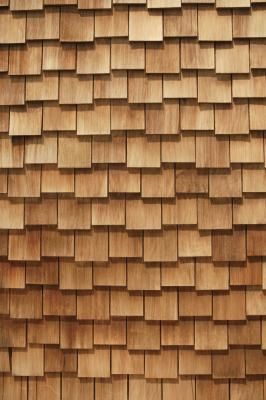


Cedar Shakes
A shake is a wooden shingle made from split logs. Shakes have been used for roofing applications throughout the united states for many decades. The method of splitting shakes rather than sawing ensures only straight-grained pieces, which ensures a much stronger product that is less likely to cup or curl. Premium-grade shakes are typically used for roofing purposes. Professionally and properly installed shakes provide long-lasting weather protection and a rustic aesthetic.
Cedar Shingles
Historically, wooden shingles are thin (3⁄8 to 3⁄4 in) and narrow (3 to 8 in), of varying length (14 to 36 in), and almost always planed smooth. The traditional method for making wooden shingles before the 19th century was to (hand split) them from straight-grained knot-free sections of logs pre-cut to the lengths and known as bolts. Bolts were than quartered or split into wedges. A mallet and axe were used to split the wedges into thin pieces of wood. The wood species varied due to available local woods. Typically, only the durable heartwood of the log was utilized for roofing.
Cedar shingle production was revolutionized in the early 19th century by steam-powered sawmills. The sawn cedar shingle of taper and smooth surface eliminated the need to hand finish. The supply of wooden shingles was therefore no longer limited by local factors. Cedar shingles are produced in pre-cut decorative patterns and called fancy-cut shingles. Cedar shingles are less durable than cedar shakes, specifically in wet environments.
Aerial View - Tapersawn Cedar Roof
Aerial view of 24” Premium, CCA Treated, 100% edge grain 3/4” Tapersawn Cedar Roof.
